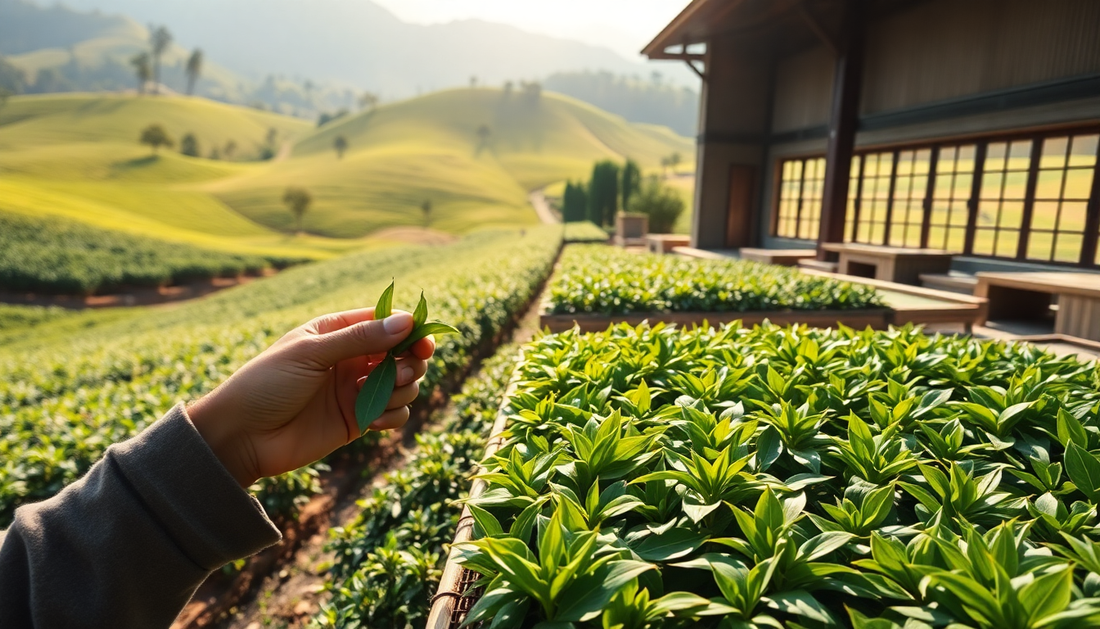
From Leaf to Cup: The Processing of Tea
ZenBrew Tea StudioTea is a beverage that has captivated the hearts and palates of people around the world for centuries. Beyond its refreshing taste and soothing aroma, the journey that tea leaves take from the plant to the cup is a fascinating story of art, science, and tradition. At ZenBrew Tea Studio, we are dedicated to sharing this story and helping our customers appreciate the intricacies of tea processing.
The Tea Plant and Its Cultivation
The tea plant, known botanically as Camellia sinensis, is a hardy evergreen shrub that thrives in tropical and subtropical regions. While there are several varieties of the tea plant, the most commonly cultivated are the Chinese (Camellia sinensis var. sinensis) and the Assam (Camellia sinensis var. assamica) varieties. These plants require specific growing conditions, including well-drained soil, moderate temperatures, and ample rainfall, to produce the high-quality leaves that are the foundation of a great cup of tea.

The harvesting of tea leaves is a delicate process that requires skilled workers to carefully select the youngest, most tender leaves and buds. This "plucking" is typically done by hand, as machines can damage the leaves and affect the final flavor. The timing of the harvest is crucial, as the leaves must be picked at the optimal stage of growth to ensure the desired characteristics.
Primary Processing: From Leaf to Oxidation
Once the tea leaves have been harvested, the primary processing begins. This stage is where the unique characteristics of each type of tea are developed, and it involves a series of carefully orchestrated steps.

Withering
The first step in primary processing is withering, which involves exposing the freshly plucked leaves to warm, dry air. This process reduces the moisture content of the leaves, making them more pliable and easier to roll or shape during the next stage.
Rolling/Shaping
After withering, the leaves are then rolled or shaped, often using specialized machinery. This step helps to break down the leaf structure and release the essential oils and enzymes that contribute to the tea's flavor and aroma.
Oxidation
The most crucial step in primary processing is oxidation, also known as fermentation. During this stage, the enzymes in the leaves are allowed to react with oxygen, causing a series of chemical changes that transform the leaf's color, flavor, and aroma. The duration and conditions of the oxidation process are carefully controlled to produce the desired characteristics of the tea.
Fixing/Firing
The final step in primary processing is fixing or firing, which halts the oxidation process and stabilizes the tea leaves. This is typically done by exposing the leaves to high heat, either through pan-firing, oven-drying, or steaming, depending on the type of tea being produced.
Types of Tea and Their Specific Processing Methods
The primary processing steps outlined above are the foundation for the production of different types of tea, each with its own unique characteristics and processing methods.
White Tea
White tea is the most minimally processed of all teas. After withering, the leaves are simply dried, with no rolling or oxidation, resulting in a delicate, subtle flavor profile.
Green Tea
Green tea is also minimized in its processing, with a focus on preserving the natural green color and fresh, grassy notes of the leaves. After withering, the leaves are quickly steamed or pan-fired to halt oxidation.
Oolong Tea
Oolong tea is a semi-oxidized tea, with a processing method that falls between green and black tea. The leaves are partially oxidized, often through a combination of withering, rolling, and controlled oxidation.
Black Tea
Black tea is the most heavily oxidized of all the tea types. After withering and rolling, the leaves are allowed to fully oxidize, resulting in a robust, full-bodied flavor and a dark, coppery color.
Pu-erh Tea
Pu-erh tea is a unique type of tea that undergoes a secondary fermentation process after the initial primary processing. This results in a complex, earthy flavor profile that can develop and improve with age.
Secondary Processing: Refining and Preparing for Consumption
After the primary processing steps, the tea leaves undergo a series of secondary processing techniques to prepare them for packaging and distribution.

Sorting and Grading
The tea leaves are carefully sorted and graded based on factors such as leaf size, color, and quality. This ensures that each batch of tea meets specific standards and can be marketed accordingly.
Blending
In many cases, tea producers will blend different batches or varieties of tea to create a more complex and balanced flavor profile. This is a common practice in the production of many commercial tea brands.
Flavoring (if applicable)
Some teas, such as Earl Grey or jasmine tea, are further processed by adding natural flavorings or essences to the leaves, enhancing the overall aroma and taste.
Packaging and Storage
Proper packaging and storage are crucial for preserving the quality and freshness of tea. Tea leaves are typically packaged in airtight containers, such as foil pouches or tins, to protect them from exposure to air, light, and moisture. The storage environment is also carefully controlled, with optimal temperature and humidity levels to prevent the tea from deteriorating over time.
Quality Control and Testing
Throughout the tea processing journey, rigorous quality control measures are in place to ensure the final product meets the highest standards. This includes sensory evaluation, where experienced tea tasters assess the tea's appearance, aroma, and flavor, as well as chemical analysis to measure the levels of key compounds that contribute to the tea's characteristics.
From Factory to Cup
Once the tea has been processed, packaged, and tested, it is ready to be transported and distributed to tea enthusiasts around the world. The final step in the journey is the proper brewing of the tea, which requires attention to water temperature, steeping time, and other factors to unlock the full potential of the leaves.

The Art and Science of Tea Processing
The processing of tea is a delicate balance of art and science, where traditional methods and modern technology come together to create the diverse range of teas we enjoy today. As tea producers continue to innovate and refine their techniques, the future of tea processing holds exciting possibilities for even greater flavor, aroma, and quality.
What Do We Want to Achieve ?
At ZenBrew Tea Studio, we are passionate about sharing the story of tea processing with our customers. By understanding the intricate steps involved in transforming the humble tea leaf into a cup of pure pleasure, we hope to inspire a deeper appreciation for the art of tea and the dedication of the skilled professionals who bring it to life. Join us on this journey from leaf to cup, and discover the true essence of tea.
